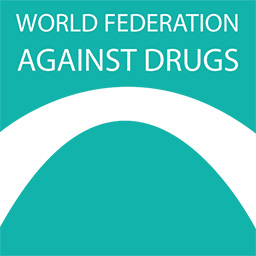During the 16 days of activism, which started on November 25th on the International Day for the Elimination of Violence Against Women and will end on December 10th on the International Day of Human Rights, the WFAD Gender Working Group is publishing statements every day highlighting issues faced by different specific populations while continuing to highlight the topic of this year: UNiTE! Activism to End Violence against Women and Girls
Gender-based violence and substance use are strongly interlinked. The negative health impact the experienced violence has on the survivor can lead to substance misuse. Additionally, substance use perpetrator often accelerates violence. Therefore, each statement, calling for preventing and eradicating gender-based violence, also calls for substance use prevention as well as sensitised and comorbid treatment.

This year’s theme to unite to end violence against women and girls also means uniting across social categories and genders. To eradicate violence against women and girls and enhance gender equality, whilst supporting every child to grow healthy and safe, – we cannot leave the boy child behind.
Across the globe, the overwhelming majority of people who use drugs and struggle with addiction are men. The most recent World Drug Report (2022) highlighted the gendered differences in drug use initiation and consequences. Albeit the historic gender gap for drug use is narrowing among youth, men are still more likely than women to use most drugs, despite some variations between regions and by drug (ibid.).
The linkages between substance abuse and violence have been showcased through these 16 days of activism statements, not the least regarding gender-based and intimate partner violence but also through showcasing that armed conflicts fuel the initiation and the use of illegal drugs. We know that the processes of initiation of drug use and addiction as well as the design of relevant services differ between genders. “Men who use drugs are more likely than women to suffer from externalizing behavioural problems such as conduct, attention-deficit hyperactivity and antisocial personality disorders” (WDR 2022, p.23). Additionally, adversity in childhood among men is more likely to lead to drug use as a mean of social defiance and dual diagnoses are typically a result of combat or crime trauma. Which have implications for situations of violence as well as other health aspects concerning the man or boy himself.
Importance of addressing mental health
It is important to look at the mental health of the boy child/man when discussing prevention measures to reduce gender-based violence. Mental health is often left undiscussed/untouched among the male population and the traditional male gender roles discourage emotional expression. Men are thought to be tough, with no need to ask for help, not to show emotions, etc. – this not only negatively impacts their mental health but also their likability to ask for help even with health services which can have detrimental impacts. While men are less likely to seek support for emotional problems, they are also more likely to “self-treat” symptoms of depression with alcohol and other substances.
Men are more likely than women to end their lives prematurely through suicide. Despite women showcasing higher tendencies of suicidal thinking, men are twice as likely to die by suicide1,2. There is a strong link between suicide and poor mental health, particularly in relation to depression and alcohol abuse. Other settings see suicide rates spike in impulsive moments of crisis, with the lack of ability to handle life stress. Additionally, “experiencing conflict, disaster, violence, abuse, or loss and a sense of isolation are strongly associated with suicidal behaviour. Suicide rates are also high amongst vulnerable groups who experience discrimination, such as refugees and migrants; indigenous peoples; lesbian, gay, bisexual, transgender, intersex (LGBTI) persons; and prisoners” (WHO). Adolescence is a critical period for youth not only for gaining socio-emotional skills or the lack thereof but is also the age period most prone to the onset of addiction. According to WHO, half of mental health conditions appear before the age of 14. Making it of utmost importance to ensure young people are provided with appropriate skills and have supportive protective factors and networks in place.
Therefore, the importance of facilitating young men and children with more positive norms that encompass self-reliance encourages help-seeking, and become emotionally aware is vital. Whilst dismantling morns norms that reinforce negative male norms, that not only cause harm to the individual boy himself but also have wider implications on drug and alcohol use as well as gender-based violence.
A supportive space, evidence-based and gender-sensitive prevention measures focusing on strengthening protective factors in place have positive impacts not only on the initiation of drug use itself but on other social health benefits such as increased mental health, better school performance, etc., as well as equipping boys and young men with the tools to understand and cope with their emotions, in a healthy and positive way. It can also be a chance to decrease interpersonal violence.
References
- Griffin L, Hosking W, Gill PR, Shearson K, Ivey G, Sharples J. The gender paradox: Understanding the role of masculinity in suicidal ideation. Am J Mens Health. 2022;16(5):15579883221123853. doi:10.1177/15579883221123853
- One in 100 deaths is by suicide (who.int)
- Understanding Suicide Among Men (verywellmind.com)
- Expressions of masculinity and associations with suicidal ideation among young males | BMC Psychiatry | Full Text (biomedcentral.com)
- World Drug Report Drugs and Age 2018 + World Drug Report 2022


Leave a Reply
You must be logged in to post a comment.